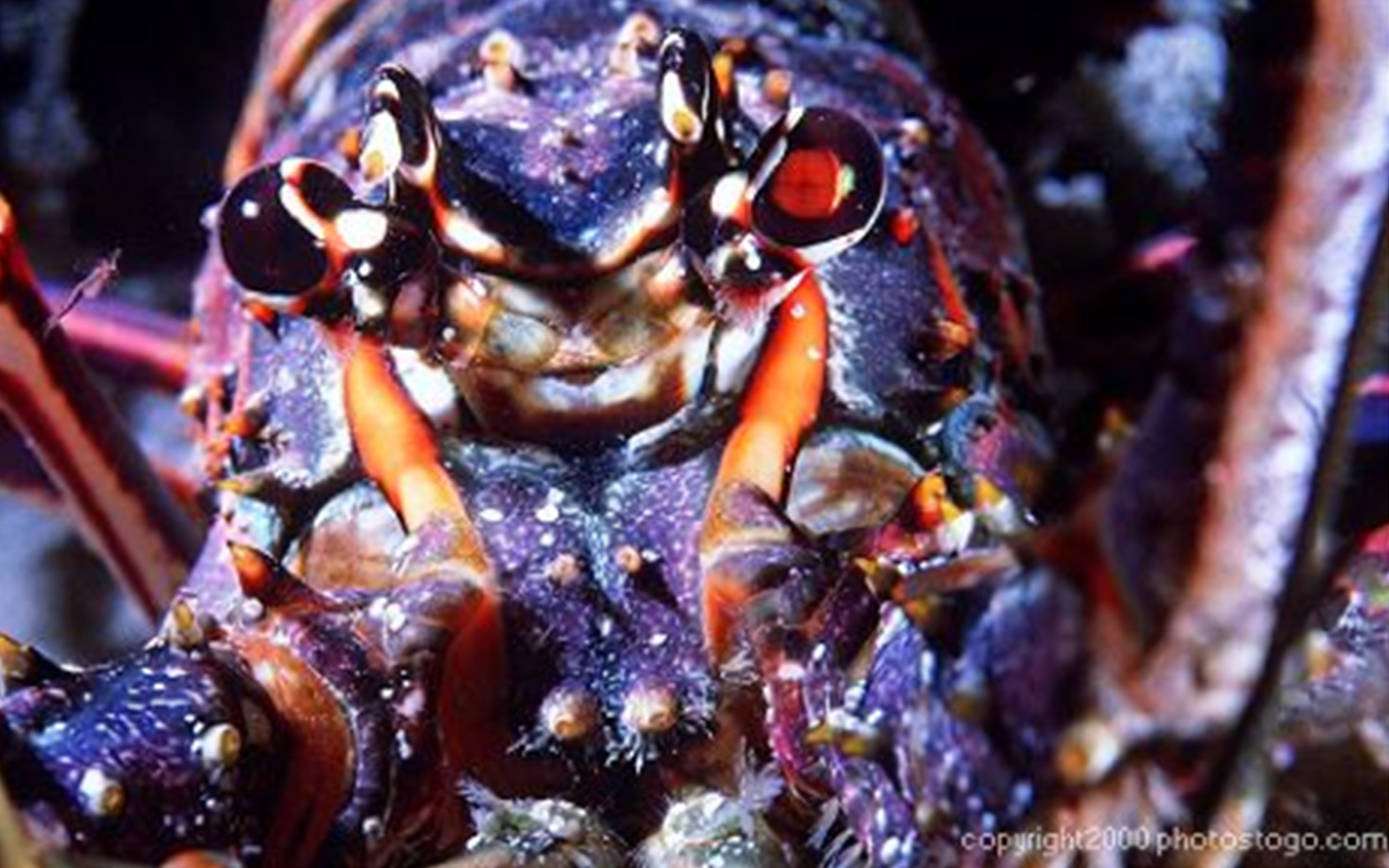- Title: Development of a Direct-ageing Technique for Gulf and Atlantic Spiny Lobster
- Principal Investigator: Mark Butler
- Funding Amount: $30,012
- Funding Source: National Oceanic and Atmospheric Administration (NOAA)
- Timeline: 06/01/20–09/30/21
No fishery is more iconic or valuable to Florida and the Caribbean than that for the Caribbean Spiny Lobster, Panulirus argus. Yet, proper management of lobsters has been hampered by our inability to directly determine their age.
Standard techniques for fishery stock assessment are largely age-based but unlike in fishes and mollusks, whose age can be determined from growth bands deposited in calcified structures, determining age in crustaceans has proved elusive.

Close up photo of Caribbean spiny lobster face. Photo Credit: Peter Bouwma
We are testing in P. argus the efficacy of a new method proposed for aging crustaceans that uses growth bands in the gastric mill ossiciles (part of the lobster stomach) to accurately ascertain lobster age. Laboratory studies of lobster growth along with collections of lobsters from fisheries in the Florida Keys, Dry Tortugas, and various Caribbean locations will allow us to construct size-at-age models useful for fishery management in each area.
Dive into this research about Butler's work on spiny lobsters using social distancing.
For more research from Butler, read this FIU News article about crabs cleaning house for corals.
Team
Principal Investigator
Mark J. Butler IV
Walter and Rosalie Goldberg Professor of Tropical Ecology and Conservation
mbutleri@fiu.edu
